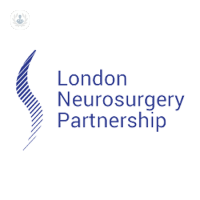Laser Interstitial Thermal Therapy (LITT)
Mr Ranjeev Bhangoo - Neurosurgery
Created on: 03-18-2024
Updated on: 03-19-2024
Edited by: Conor Lynch
What Is LiTT?
Laser interstitial thermal therapy (LiTT) is a minimally invasive technique that uses laser beams guided by MRI to precisely and accurately target and destroy abnormal tissue within the human brain.
LiTT enables neurosurgeons to precisely ablate tumours, scar tissue, or lesions causing seizures.

What does the procedure involve?
The procedure involves a small incision (a single stitch) and usually only requires one or two nights in the hospital. A specialised probe equipped with laser fibres is inserted through a small hole in the skull. Using real-time MRI imaging, the surgeon then confirms that the probe tip sits precisely within the lesion.
Following this, the laser beam heats up the tip of the probe, damaging the surrounding abnormal tissues. Special MRI sequences monitor the temperature in order to prevent healthy structures from being harmed.
What conditions can LiTT effectively treat?
LiTT effectively treats epilepsy caused by brain lesions (e.g., scars, malformations, or blood vessel abnormalities). LiTT is also a highly effective procedure when it comes to metastatic brain tumours and some gliomas. By implanting a laser catheter into the tumour, the heat destroys cancer cells. Radiation necrosis is also a condition that can be treated by LiTT.
Are there any side effects associated with LiTT?
LiTT is a very safe procedure with a smaller risk profile than open surgery. Having said that, however, there are some risks involved. The main potential side effects include bleeding, infection, cerebrospinal fluid leakage, speech problems, memory loss, and headaches.



